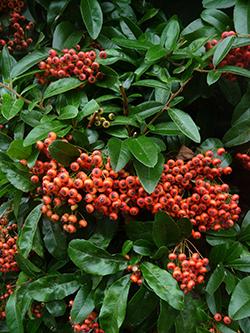Through summer and autumn, the fences, trellis and walls in our garden are softened by climbing plants of all descriptions but there is always room for another! A long, metal trellis is the support for a beautiful ornamental vine (Vitis) which is about to burst into leaf after its winter haircut, when the twiggy growth is pruned back so that the vigorous shoots are kept in bounds at least for a while! By the time autumn arrives, this unruly plant has outgrown its trellis and sets its sites on scaling a small Cotoneaster tree and a larger Myrtle. I can forgive the vigorous growth because when the heart shaped leaves put on their autumn coat of orange and deep red, the plant is a highlight of the garden and much admired as it illuminates the dark green Myrtle for a few weeks.
of all descriptions but there is always room for another! A long, metal trellis is the support for a beautiful ornamental vine (Vitis) which is about to burst into leaf after its winter haircut, when the twiggy growth is pruned back so that the vigorous shoots are kept in bounds at least for a while! By the time autumn arrives, this unruly plant has outgrown its trellis and sets its sites on scaling a small Cotoneaster tree and a larger Myrtle. I can forgive the vigorous growth because when the heart shaped leaves put on their autumn coat of orange and deep red, the plant is a highlight of the garden and much admired as it illuminates the dark green Myrtle for a few weeks.
Scrambling through the vine is a late flowering Clematis with wine-red petals that curve back from the center of the flowers to reveal the yellow middles. This Clematis viticella, along with another white one that scales a trellis near the compost heaps, is one of my favorite plants in the garden. The ‘Viticellas’ are so easy to grow and there is no head scratching as to their pruning. When February arrives, I prune the woody stems to a fat pair of buds a few centimetres from the ground and feed them with some homemade compost. The plants then get on with growing and produce their charming flowers for months from July onwards – nothing could be simpler!
Honeysuckles are also invaluable in our exposed garden and we have several including the deliciously scented Lonicera periclymenum ‘Graham Thomas’ with golden yellow blooms from midsummer onwards and L. x italica which is a great plant for a shady spot. These too are little trouble to keep with just a prune of the longest growths after flowering to keep them tidy and encourage twiggy side shoots for next year’s show.
The Japanese Honeysuckle (Lonicera japonica ‘Halliana’) which is evergreen and seems to flower for months, takes the full force of winter gales and provides a much needed windbreak for other parts of our garden. The sweet scent of the pale yellow flowers is a treat on a warm summer evening and a big attraction to many insects including Hummingbird Hawk Moths and many bees and butterflies.
As well as climbing plants, we have some wall shrubs including two Firethorns (Pyracantha) which themselves make a good climbing frame for other plants. One is on a shady fence where it has made a stiff framework of glossy evergreen leaves that highlight the clusters of red berries which are stolen by Thrushes and Blackbirds in the autumn. Some early color is needed here and I am on the lookout for a Clematis that will flower now – the nodding blooms of Clematis macropetala or C. alpina would be just the job for this shady spot and the plants are not too vigorous that they would take over or need too much pruning. On the front of the house is another Firethorn that makes a narrow column on the sunny wall between the garage and a side gate where it flowers well and produces plenty of orange berries - again stolen by the Blackbird in autumn! Because there is little space to plant another climber here, I have grown some annual climbers from seed, including the brightly coloured ‘Canary Creeper’ (Tropaeolum peregrinum) with its golden yellow flowers. These plants like Sweet Peas, only live for one year but make up for their short lives by packing a real punch with the number of flowers that they produce! I will pop a couple of plants in at the base of the Firethorn and if this experiment works, I may expand my range of annual climbers next year – there are plenty of seeds available from Notcutts to tempt me!
